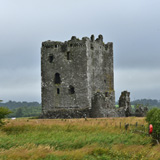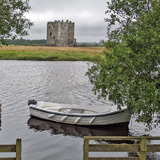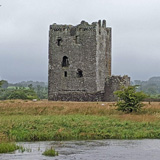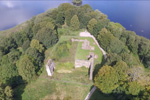History
Threave Castle is a traditional Scottish tower-house castle built on a small island in the middle of the River Dee by the 3rd Earl of Douglas, Archibald the Grim, soon after he became Lord of Galloway in September of 1369. An earlier castle located here was burned to the ground by Edward Bruce in 1308 after his defeat of the Gallovidians during the Wars of Independence.
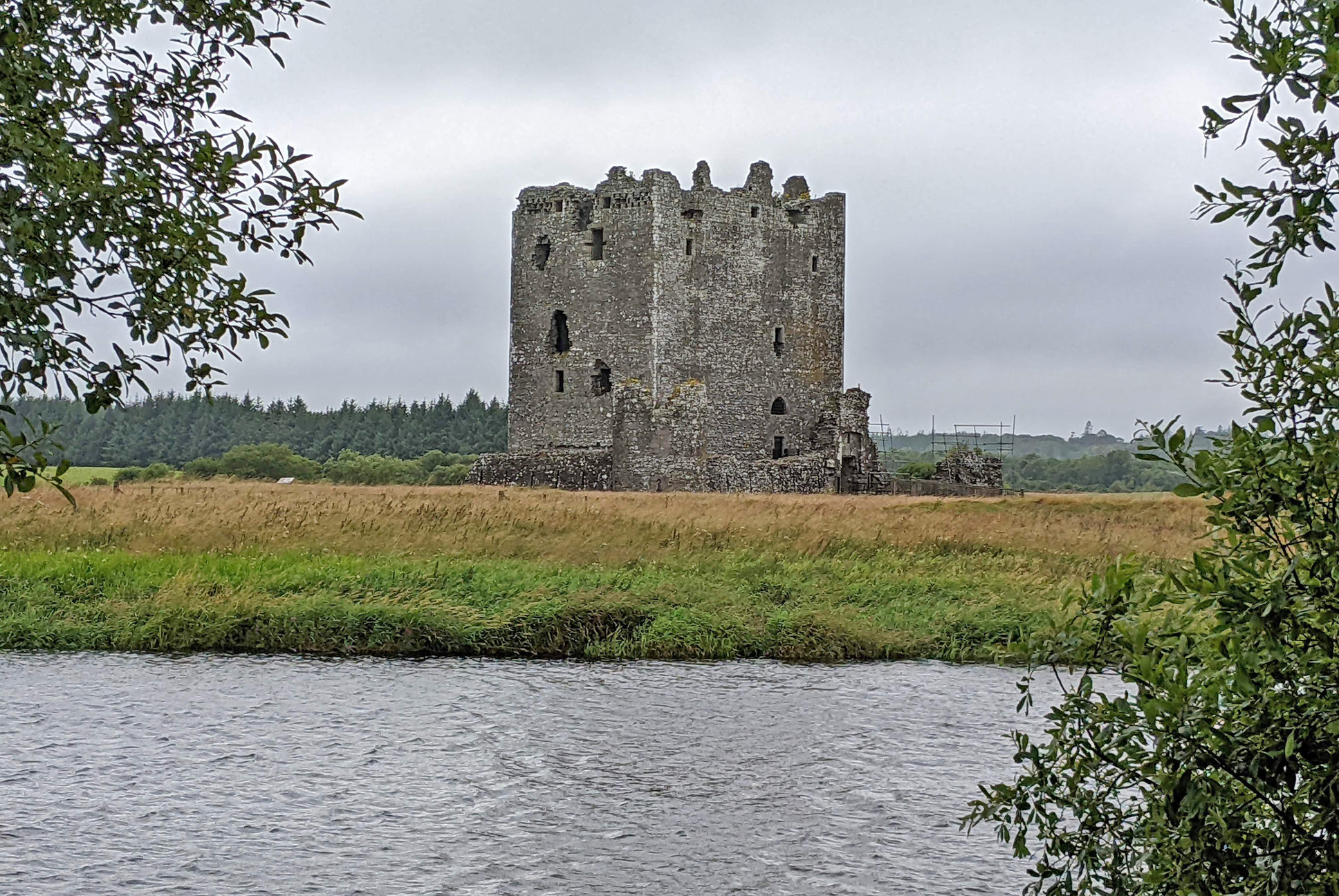
In 1384, Archibald led a successful assault on nearby Lochmaben Castle, where the English were finally expelled from southwest Scotland. Archibald would die at Threave Castle on Christmas Eve in 1400. The Black Douglas family rose to become one of the most powerful in Scotland. The Black Douglas dynasty began with Archibald's father, the "Good Sir James" Douglas, who was a trusted lieutenant of Robert the Bruce. When Bruce lay dying in 1329, he asked James to take his heart on crusade. When James was killed, Bruce's heart was recovered and buried at Melrose Abbey. Since then, the heart has been the symbol of the Douglas family.
Archibald the Grim's son, also named Archibald, married King James I's sister, Lady Margaret, and was created Duke of Touraine in France after a victory against the English at the Battle of Bauge in 1421. He was killed three years later at the Battle of Verneuil.
It was from Threave Castle that the 16-year-old 6th Earl of Douglas, William, and his younger brother David rode out to Edinburgh Castle, where they were murdered in 1440 in what would become known as the Black Dinner. The 8th Earl of Douglas, another William, was murdered in 1452 by James II at Stirling Castle after being invited there by the King. The 9th Earl of Douglas, James, plotted with the English against James II.
In 1455, James II besieged Threave Castle for two months. The Earl of Douglas added an artillery wall flanked by two drum towers around the base of Threave Castle to help protect it from cannon fire. James II brought an army and the bombard, Mons Meg, to Threave. The castle's defenders were bribed into submission, and the last Earl of Douglas fled to England, never to return to Threave Castle.
The castle passed to crown control, and records show that payments were made to repair the roof and artillery house following the siege. They also show the movement of weapons to and from the castle. The castle's upkeep was financed from the surrounding farms, which still exist today. James II stayed at Threave Castle only once, in 1460, on his way to the siege at Roxburgh Castle, where he was killed, ironically, when one of his great bombard cannons exploded near the King.
In 1513, Robert, 5th Lord Maxwell, was appointed keeper of Threave Castle after the Battle of Flodden. In 1526, the post was heritable to the Maxwells of Caerlaverock Castle. In 1544, the English briefly captured Threave Castle during the Rough Wooing, when Henry VIII attempted to force a marriage between his son Edward and the infant Mary Queen of Scots.
In the 1580s, John, 8th Lord Maxwell, traveled to Spain to assist in planning the Spanish Armada's attack on England. On his return, he was arrested for treason, and his castles, including Threave, were confiscated. Lord Maxwell was killed in 1593 during a feud with the Johnstones of Annandale. His son, 9th Lord Maxwell, sought revenge but was himself beheaded for the murder of Laird of Johnstone in 1613. His actions are immortalized in the ballad "Lord Maxwell's Last Goodnight."
In 1639, Robert Maxwell, now 1st earl of Nithsdale, supported Charles I as Charles attempted to reform the Scottish Church. This escalated into the Bishops' Wars, and at the request of the King, Robert garrisoned Threave Castle with 100 troops and enough arms and ammunition to withstand a lengthy siege.
In June 1640, the Army of the Covenant, led by Lieutenant Colonel Hume, laid siege to Threave Castle. Hume discovered that heavy artillery could not take the castle, but after 13 weeks, the garrison surrendered on the orders of Charles I, as Charles could not send reinforcements. The Covenanters decided to dismantle the castle and order that the slate roof be taken down, the vault be broken open, and the timber and ironwork be disposed of. Locals were allowed to use the materials from the castle, and some were used to construct nearby Barscobe Castle.
Threave Castle was never used as a residence again. In the 1800s, the tower house was made suitable for holding prisoners from the Napoleonic Wars, but there is no record that the castle was ever used to hold prisoners.
In 1913, Threave Castle was entrusted to State care and became the first Scottish castle to be protected in this way. Restoration work was done, including rebuilding the kitchen's stone vault and the artillery wall. Today, The National Trust of Scotland and Historic Environment Scotland work in partnership to conserve the heritage of Threave Castle and the island.
Castle Highlights
The 14th-century Tower House, which makes up the ruins of Threave Castle today, is the most impressive part of the castle. It stood over 80 feet tall, consisting of five floors and a garret. A kitchen and fireplace occupied the upper part of a vaulted basement. Below was a well for water and a pit prison, accessed by a trap door. The lord's hall was located on the first floor. Above the hall were the Douglas's private apartments.
The artillery wall surrounding the tower house was a new defense against gunpowder artillery. The wall runs between three corner drum towers and faces higher ground to the south and east. The wall continued to the harbor, where there was a gate, and then north from the harbor to the tower house. The corner towers stood three levels high. A water-filled moat surrounded the outside of the artillery wall.
At one time, the castle had a courtyard surrounded by other buildings, including a great hall, chapel, stables, doocoots, bakehouses, and brewhouses.
Today, the island is home to wildlife, including nesting peregrine falcons, ospreys hunting its waters, and otters playing in the River Dee. Threave Castle can be thoroughly explored in a half day or less. Caerlaverock Castle is close enough to be visited on the same day to make a full day of visiting castles.
